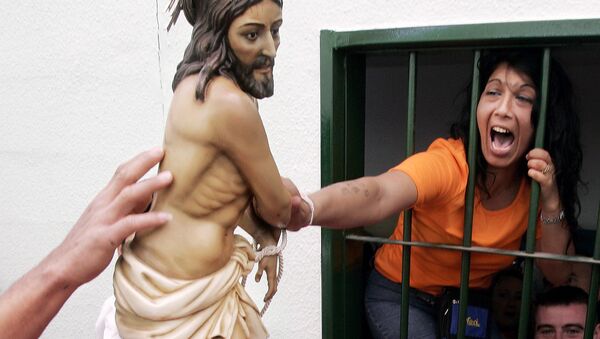An historical document was found inside the backside of the Cristo del Miserere statute of Christ housed in the Santa Águeda church in Sotillo de la Ribera, Spain, restoration company Da Vinci Restauro recently reported.
When historians examined the two-page note contained within the statue's behind, they found it to be written by an 18th-century Spanish priest.
"Although it is usual for many sculptures to be hollow, it is not so much to find handwritten documents inside," historian Efrén Arroyo, a member of the Holy Week Brotherhood of Sotillo de la Ribera, said, the International Business Times reported.
According to historians, the time capsule document was written some 240 years ago by Joaquín Mínguez, a chaplain of the Cathedral of the Burgo de Osma, where the statue was stored. In the letter, Mínguez describes life in Spain at the time. He also describes Manuel Bal, the statue's sculptor, as a "natural scholar of San Bernardo de Yagüe and neighbour in Campillo, both of this Bishopric of Osma."
The priest detailed that Bal sculpted other religious figures on display at the Sotillo de la Ribera church, including Santa Águeda and the saints Santiago, Millán, Jerónimo, and Juan.
The note also added that King Carlos III was the monarch at the time and lists names of alderman, important historical events and popular crops, including wheat, rye, barley, oats and grapes, alongside common diseases like malaria and typhoid fever, as well as popular bar and card games.




